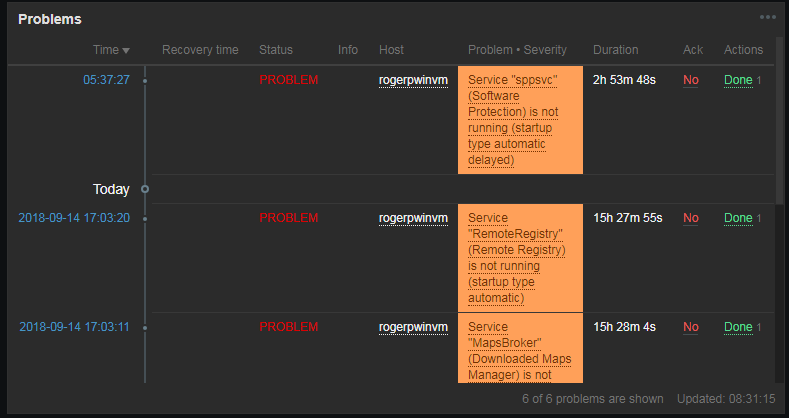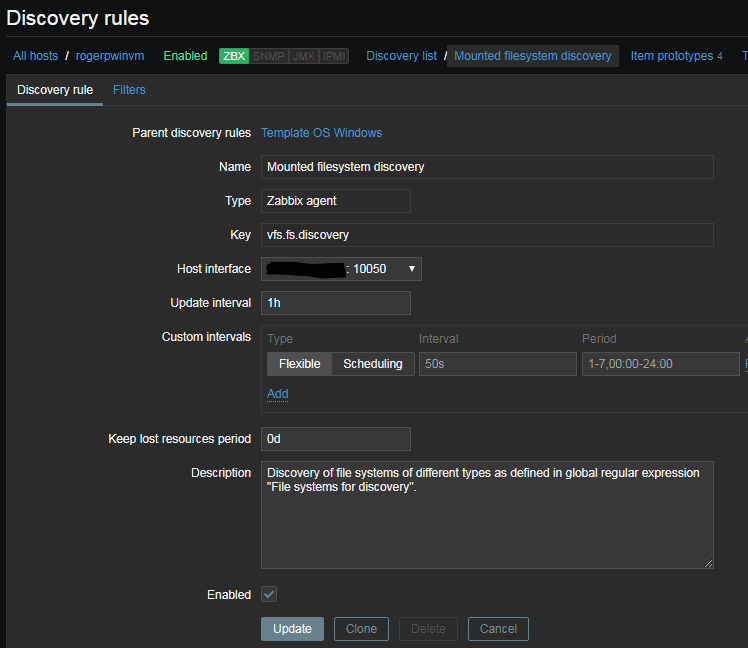When installing windows servers, there are constant alerts for:
Service “sppsvc” (Software Protection) is not running (startup type automatic delayed)
Service “RemoteRegistry” (Remote Registry) is not running (startup type automatic)
Service “MapsBroker” (Downloaded Maps Manager) is not running (startup type automatic delayed)
Service “IaasVmProvider” (IaasVmProvider) is not running (startup type automatic)
Service “WbioSrvc” (Windows Biometric Service) is not running (startup type automatic)
Service “VSS” (Volume Shadow Copy) is not running (startup type automatic)
Check Configuraton > Hosts > Server Name > Click on Discovery inline with server namre > Mounted filesystem discovery. Find “Keep lost resources period:. Change from 31d to 0d.
Reference: https://www.zabbix.com/documentation/3.2/manual/discovery/low_level_discovery#discovery_of_file_systems
this has to do with the “Specifically to the Keep lost resources period” (in days) parameter.
Explanation:
If an entity is discovered by LLD, and then is either: removed; lost; or excluded by a filter, it is still kept in Zabbix for the duration of time defined by the Keep Lost Resources parameter (default is 30 days).
So, the changes were recognized in the next LLD cycle (1 hour), but the filtered entity was then considered “lost”, so would be kept for an additional 30 days. If I had waited that long, it would have finally disappeared.
Fortunately you can set that parameter to “0” and it will disappear after the next LLD cycle. Best not to leave that setting at “0” though, so reset back to “30” after LLD.


